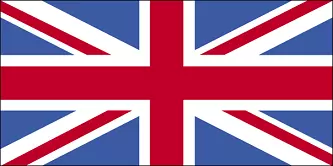Over time the English grew more and more powerful and began to spread their influence to these other regions. This was more than just a conflict of politics and power, it was a battler between cultures. The Welsh, Scottish, Irish, and English all spoke differing languages, they all ate different foods, maintained different lifestyles, and clung to differing beliefs. With English dominance over the isles the English language was stressed, Christianity was spread (although most people already were Christian), and English culture began to dominate the region.
Despite resistance and battles, the English were fairly successful in spreading their cultural influence over the people, although aspects of Welsh, Scottish, and Irish culture are still very noticeable today. In fact, in recent years there has been a resurgence of these cultures as the people can now openly express their opinions with fear of political retributions.
English influence and power expanded beyond just the British Isles as they became a world power. This helped introduce new ideas and people to the country, while also exporting British ideals and values. Among these exports was the Industrial Revolution, which changed the world in many ways, but most significantly in terms of lifestyle, healthcare, technology, including in communication and infrastructure. This shrunk the world in many ways and today much of the world is as it is today due to British influence.
Despite the complete change in lifestyle for many people, the cultures abroad and domestically remained fairly loyal to their past. The country may share similarities in terms of urbanization, occupations, communication, and transportation, but culturally, all the people of the United Kingdom remain unique. The Welsh, Scots, Irish, and English all maintain culturally significant traditions, languages, foods, and more. In fact, the United Kingdom is becoming even more culturally diverse each year as immigrants are bringing cultures from other European Union countries as well as from all corners of the globe to these relatively small islands, particularly to the thriving metropolis of London.
 The large "t"-shaped cross on the flag is the cross of St. George, the patron saint of England. The diagonal, "x"-shaped cross is the cross of St. Patrick, the patron saint of Ireland. The white diagonal, "x"-shaped cross is that of St. Andrew, the patron saint of Scotland. The flag is officially called the "Union Flag," but is more often referred to as the "Union Jack."
The large "t"-shaped cross on the flag is the cross of St. George, the patron saint of England. The diagonal, "x"-shaped cross is the cross of St. Patrick, the patron saint of Ireland. The white diagonal, "x"-shaped cross is that of St. Andrew, the patron saint of Scotland. The flag is officially called the "Union Flag," but is more often referred to as the "Union Jack."
Name: United Kingdom of Great Britain & Northern Ireland
Independence: April 12, 1927 (current government formed); 1066 widely recognized
Capital: London
Currency: Pound Sterling
Population: 63,395,574 (2013 estimate)
Ethnicity: English, Scottish, Welsh, Irish, & others
Language: English
Religion: Christian